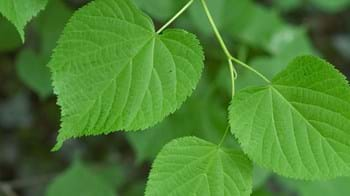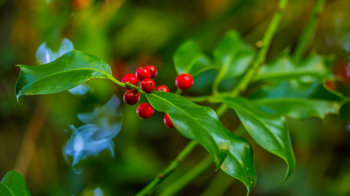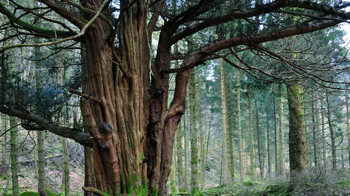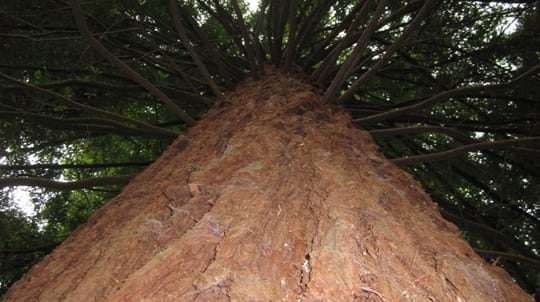
Pepper Wood
Fairfield nr Bromsgrove

Woodland Trust wood group
- Pepper Wood
- Pepper Wood Extension (Gorsy Piece)
59.58 ha (147.22 acres)
SO937749
Explorer 219
OS Landranger 139
Pepper Wood is an ancient and hugely valuable community woodland which we were lucky enough to buy in the early 1980s.
It's a Site of Special Scientific Interest (SSSI) and boasts an exceptional diversity of trees and shrubs plus a number of rare and uncommon flowering plants. The wood also has a good network of rides and waymarked trails open for all to explore.
Features
- Parking at site
- Public access
- Spring flowers
- Waymarked walk
- Broadleaved woodland
How to get to Pepper Wood
Pepper Wood is a short 5-10 minute walk from the village of Fairfield and around 4 miles from Bromsgrove, Worcestershire. At almost 60 hectares (147 acres), it is a significant remnant of the once much larger 'Feckenham Forest' and an important green sanctuary in a landscape on the fringes of the city of Birmingham.
From junction 4 of the M5, head west on Sandy Lane (A491). At the roundabout, take the first exit onto Stourbridge Road (B4091). At the next mini roundabout, take the second exit onto Bournheath Road (which turns into Brooke Road part way along). At the end of this road, turn right onto Dordale Road, and the Pepper Wood car park is approximately 300m along on the right hand side.
The nearest train station to Pepper Wood is in Bromsgrove, approximately 4 miles away.
For more information on local public transport visit Traveline.
There are several bus stops along the main street in the village of Fairfield, about a 10-minute walk from the wood.
For more information on local public transport visit Traveline.
Facilities and access
A network of paths and waymarked trails offers a variety of routes through the wood. A surfaced and mostly flat bridleway, the best route for pushchairs and wheelchairs, also bisects the wood from north to south and passes through the car park.
There are some steps, bridges and slopes to navigate elsewhere in the wood, and some unsurfaced paths can become muddy in winter.
A small car park with space for six vehicles is located at the main entrance to the wood on its southern side, accessed off Dordale Road.
The nearest toilets to Pepper Wood are at Bromsgrove bus station approximately 4 miles away.
Wildlife and habitats
Animals
Woodland birds such as nuthatch, jay, marsh tit and great spotted woodpecker are just some of the species you can expect to spot on a visit to Pepper Wood. Buzzards can be heard mewling overhead, and at night tawny owls patrol the clearings.
The wood is also home to the rare land caddisfly (Enoicyla pusilla) – the only UK caddisfly species (out of 200 in total) that has a completely terrestrial lifecycle. They are found only in Worcestershire and some of the surrounding counties. Look out for their sandy larval cases among the oak leaf litter they feed upon on the woodland floor.
Pepper's open habitats are well suited to the white admiral butterfly and a number of uncommon moths. Eagle-eyed visitors might also be lucky enough to encounter the local herd of melanistic (dark-coloured) fallow deer as they pass through the wood.
Look out for:

Your support matters
An extension to his wood was secured for the future thanks to your response to an urgent appeal. Discover how you helped us bring more important habitat safely under our wing, and what the future holds for Pepper Wood.
See what we've achievedTrees, plants and fungi
Regular coppicing has left Pepper Wood with an open canopy full of dappled light which has encouraged more than 100 species of woodland plants and flowers to thrive. Rare finds that thrive in the wood's sunny rides and dappled shade include herb paris, violet and broad-leaved helleborine, lily-of-the-valley, betony, lady's bedstraw, spiked wood sedge and common centaury
The wood is notable for its large and small-leaved lime trees (rarely found growing together) and alder buckthorn (unusual for the area). It is also home to the scarce and beautiful wild service tree. Keep an eye out too for the wood's only mature field maple just next to the car park.
Because it has been clear-felled in the past, most of the trees are of a similar age and height: the coppicing rotation is boosting the biodiversity of the site, while areas of high forest are retained to ensure the survival of older and veteran trees.
Look out for:
Habitats
Pepper Wood is an ancient woodland which has shown a remarkable ability to heal through natural regeneration. The wood has been devastated by clear-felling twice - once during the First World War and again a few years following the Second World War, although fortunately it was not re-planted with conifers.
Gorsy Piece, a much smaller extension we were able to buy in 2017, is already regenerating after just three years of being left to nature. Here saplings are growing among rare grassland species such as ragged robin, bugle, wild angelica, greater bird's-foot trefoil and the common spotted orchid.
Pepper is very much a working wood, and thanks to regular and rotated coppicing by a dedicated local community group, it has developed a varied and open structure which is perfect for a number of uncommon plants, butterflies, moths and other wildlife. In fact, it was thanks to this hard work that the wood achieved its SSSI status.
Explore:
About Pepper Wood
History dating back centuries
Once known as Pyperode, Pepper Wood is a remnant of North Worcestershire’s ancient Feckenham Forest, with records dating back as far as the 1200s.
During the industrial revolution timber from this and other local woodlands were used to supply charcoal to the iron foundries - there were over 20,000 of them in the 1850s stretching from Wolverhampton to Bromsgrove. Pepper Wood is also only three miles from the village of Belbroughton which in the 19th century was the world’s largest manufacturer of scythes. Some of the staves almost certainly came from Pepper Wood. So the reintroduction of coppicing with standards by the community group in the 1980s is a tradition that dates back centuries and the wood is once more generating charcoal – although these days normally for barbecues.
A real community wood
Today, Pepper Wood is enormously important within the local community of Fairfield and Bromsgrove. Like the majority of ancient woods, it has always had a close relationship with humankind and is one of many woods in North Worcestershire to have been managed from Roman times through to the industrial revolution.
After the Woodland Trust took ownership in 1981, we handed the guardianship of the wood over to Pepper Wood Community Woodland Group whose loyal members have taken on the management of the site by reintroducing the centuries-old tradition of coppicing with standards. Trees are coppiced in sections of around a hectare a year on a strict rotation, allowing the wood to be gradually opened up so that trees reach varying heights. This provides valuable habitats for wildlife and gives the wood its sunny, spacious feel, allowing rarer species of tree – such as the wild service - to grow to maturity.
What's been achieved so far at Pepper Wood
Thanks to the support of the community, successful fundraising and our tree planting days our plans to extend and transform the wood into a wildlife haven have been kick-started.
Around 250 trees were planted during our December 2022 by volunteers from the local community, staff from Lloyds Bank and pupils from Fairfield First School.
We are delighted that our children can get involved in the activities at Pepper Wood. We use it as a learning resource throughout the year and it's well-loved by our children and their families. To help transform it for the future is a wonderful experience.

A lasting legacy
This wood is just one of many to have been protected by gifts in wills, securing it for generations to come. Your legacy gift could also make a real difference to woods, trees and wildlife.
Learn what your gift could mean















































